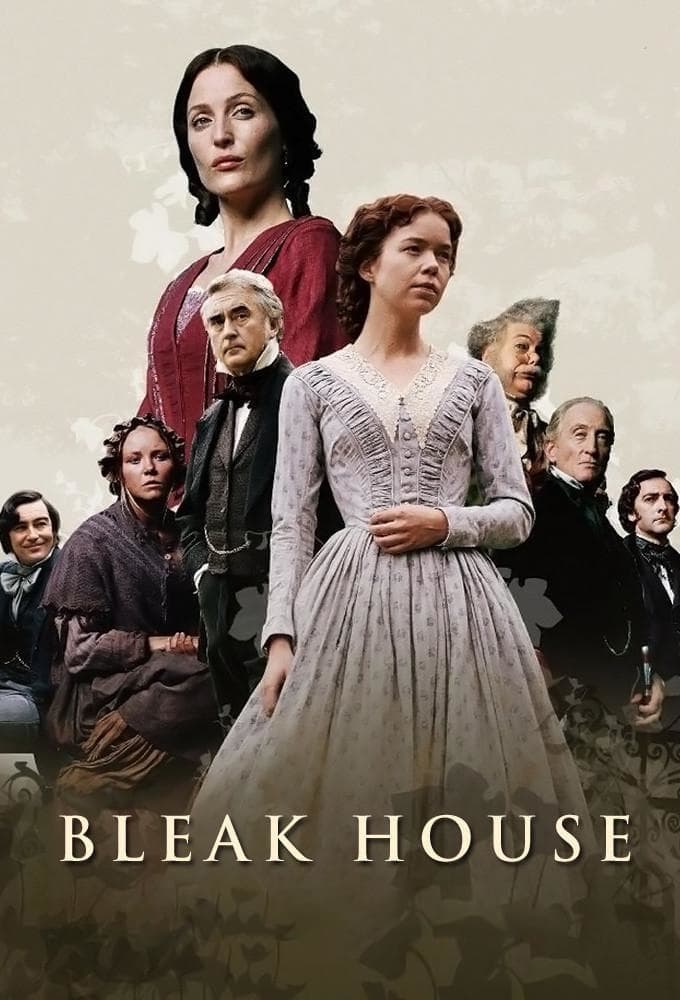
The generous John Jarndyce, struggling with his own past, and his two young wards Richard and Ada, are all caught up, like Lady Dedlock, in the infamous case of Jarndyce vs. Jarndyce, which will make one of them rich beyond imagination if it can ever be brought to a conclusion. As Tulkinghorn digs deeper into Lady Dedlock's past, he unearths a secret that will change their lives forever, and which is almost as astounding as the final outcome of the Jarndyce case.
20 Jan Bleak House (2005)
Television as the Grinder
Dickens is a marvel. You have to understand what he did to understand why this adaptation doesn’t work.
His writing was quite different than anything before. Others built worlds within which things happened. Characters were part of that machine. With Dickens, he created the characters, filled them with something like distilled life and turned them loose. He famously would start a book, finishing each chapter without knowing much about how it would develop. More, we would even publish those first chapters, release them into the wild!
For this to work, his characters couldn’t have much reality, but be abstracted from reality as caricatures. Each chapter was crafted to maintain humour even when the evil were busy. The whole idea was that it wasn’t a singular narrative but the threads of many sentient-like beings weaving together under their own volition. That’s where the richness comes from and the nearness of the abstraction.
The term “Dickensian” infers a surreal quality, a world close enough to ours to use familiar things, but far enough away that every boundary is thick but no one or thing has mass. Think of Tim Burton but with words and capable of more complexity, someone who creates sentient dolls we gather around to watch hit and hug each other.
Now this. The adapter and director has made some choices. Instead of caricatures we get real characters because that’s what TeeVee viewers expect from “period dramas.” Essentially all the lightness is gone: this is dark, dark, dark. That’s different than the recent TeeVee “Nickleby” which preserved Charlie’s humour. The only exception here is with Guppy and his mother. And he makes a point of being mortified in the presence of these heavier folk.
Instead of independent agents variously discovering the future, we have the thing presented as one narrative chain whose conclusion is set from the beginning. All this because of the demands of TeeVee. Austin, Bronte, Dickens, Eliot… They are all treated as if they were they same, fleshed out outlines for teleplays.
Continuing: instead of the camera engaging in the space that Dickens worked so hard to surround and define, our camera here focuses on faces so close that we often only get 3/4 of a face. Think about when you read Dickens and recall if faces were ever what you imagined. No, you imagined the hearts and minds. Faces, no matter how well presented by the players are a dim substitute for the original, though a few actors here do well enough to keep you watching.
And then, the final travesty, the final insult to the material, that sweeping camera which would be fine were it not for the swooshing noises it makes, And between sequences those three “metal door closing” slams which originated in prison movies and have been adopted in the vulgar cinematic lexicon to denote another ratchet moved in the wheel of fate.
Now mark you, I will readily abandon the author’s intent if we get good cinema, if we get something I can use in my life. (“Prospero’s Books is my favourite Tempest.) I don’t even mind vacuous entertainment. But the source material was so very rich, so modern, so cinematic. And this… this is so TeeVee, even though we do come to love Esther and hate Tulkinghorn, but isn’t that simply because the presentation isn’t incompetent and we have invested 8 hours? And he IS a lawyer, after all.
Posted in 2006
Ted’s Evaluation — 2 of 3: Has some interesting elements.


No Comments